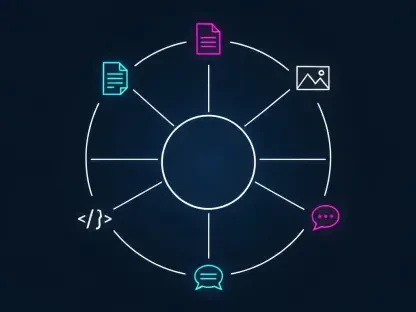The Cybersecurity Maturity Model Certification (CMMC) 2.0 has become an imperative compliance measure for defense contractors in the United States. It represents a regulatory shift aimed at enhancing the security and protection of controlled unclassified information (CUI) across the defense industrial base. The Department of Defense (DoD) has implemented this framework to mitigate the growing cyber threats faced by contractors holding sensitive defense information. As these enhanced regulations are now in effect, businesses within the defense sector must promptly navigate the complexities of the new standards to maintain their contracts with the DoD. This article delves into the intricacies of CMMC 2.0, examining how it reshapes defense contracting and what steps businesses need to take to align with these crucial compliance requirements.
1. Understanding the Impact of CMMC 2.0 on Defense Contracting
With the introduction of CMMC 2.0, the landscape for defense contractors is undergoing a significant transformation. This new framework imposes mandatory third-party audits to verify compliance, marking a departure from the previous self-attestation approach. By instituting more rigorous cybersecurity measures, the DoD aims to protect national security through simpler and more effective safeguarding measures. Compliance with CMMC 2.0 not only ensures that contractors secure their defense contracts but also signals a commitment to cybersecurity best practices. This systematic compliance approach enhances the country’s resilience against evolving cyber threats.
The CMMC 2.0 framework is categorized into three distinct levels of cybersecurity maturity, each tailored to the type of work and sensitivity of the data managed by the contractor. These levels range from basic cyber hygiene to advanced protections against sophisticated threats. Contractors are now tasked with determining their appropriate level of compliance based on their specific contractual obligations. This change not only necessitates an evaluation of existing policies but also calls for security controls and additional employee training to ensure adherence to the designated CMMC level. Early engagement with third-party assessors is also recommended, facilitating a seamless transition to CMMC 2.0 compliance.
2. Preparatory Steps for Achieving CMMC 2.0 Compliance
Preparation is pivotal for government contractors to align with the CMMC 2.0 objectives effectively. The initial step involves a thorough evaluation of the organization’s current cybersecurity posture to identify necessary improvements. Contractors should analyze their contractual obligations to discern which CMMC level is pertinent to their operations. This involves understanding the Controlled Unclassified Information (CUI) protection clauses specified in contracts and adjusting organizational strategies accordingly. Aligning cybersecurity policies with CMMC requirements might entail adopting new security frameworks, updating existing processes, and investing in employee training programs to build cybersecurity expertise.
A proactive approach includes engaging with authorized CMMC Third-Party Assessment Organizations (C3PAOs) early in the process. These assessments provide an external verification of the organization’s compliance status and readiness for certification. Such engagements foster a thorough understanding of CMMC requirements and ensure that contractors have addressed potential vulnerabilities. Embedding cybersecurity within the organizational culture, alongside leveraging industry knowledge from experienced professionals, contributes to the development of robust practices that exceed the CMMC expectations and guard against future threats.
3. Navigating the Third-Party CMMC 2.0 Audit
Embarking on the third-party audit process is vital for contractors aiming to achieve compliance under CMMC 2.0. The journey begins when a contractor—known officially as an Organization Seeking Certification (OSC)—contacts an authorized C3PAO to initiate an assessment. The success of the audit relies a great deal on proper planning and preparation by both the OSC and the C3PAO, ensuring clarity on the scope and specific CMMC-level requirements. Collecting and organizing necessary documentation forms the foundation of this preparatory phase, enabling a smooth audit process.
During the assessment phase, C3PAOs conduct detailed evaluations of the OSC’s compliance readiness, scrutinizing cybersecurity practices, policies, and procedures against the required standards. This examination is pivotal, as it highlights any deficiencies and provides insights into areas needing improvement. Post-assessment, the C3PAO compiles a report articulating findings, recommending steps for remediation if any gaps exist. Contractors are then responsible for addressing these gaps, participating in follow-up assessments if required, and ensuring the completion of required improvements to obtain the CMMC 2.0 certification. The credibility and thorough vetting of C3PAO assessors, under the guidance of the CMMC Accreditation Body, lend assurance to contractors regarding the assessment’s integrity and adherence to top-tier standards.
4. Proactively Maintaining Cybersecurity Vigilance
Navigating the future defense contracting landscape requires more than just meeting the current cybersecurity requirements. Contractors must adopt a forward-thinking perspective on cybersecurity, continually evolving to keep pace with the rapidly changing technological environment. While achieving CMMC 2.0 compliance marks a significant milestone, sustaining a competitive edge demands ongoing vigilance and adaptation to emerging cyber threats. Continuous monitoring of security posture, coupled with fostering an organization-wide culture of cybersecurity awareness, is essential. Organizations should remain informed about evolving threats, adopting emerging best practices in cybersecurity to enhance resilience.
Seeking guidance from cybersecurity experts and utilizing advanced technological resources are proactive strategies that can aid contractors in navigating the complexities of the CMMC framework. Staying informed about industry advancements and standards ensures that businesses remain ahead of cyber threats, By choosing appropriate CMMC levels, preparing diligently for compliance, and implementing robust cybersecurity strategies, contractors secure the longevity of their defense contracts, reaffirming their commitment to national security excellence. Through strategic foresight and innovation, they can navigate the challenges and seize opportunities in the defense contracting realm.
Concluding Insights on CMMC 2.0 Compliance
With the rollout of CMMC 2.0, defense contractors face considerable changes. This new framework introduces mandatory third-party audits for verifying compliance, moving away from the previous self-attestation model. By enforcing stricter cybersecurity protocols, the Department of Defense seeks to shield national security with streamlined yet effective protective measures. Adhering to CMMC 2.0 not only helps contractors secure defense contracts but also reflects their dedication to cybersecurity best practices. This systematic compliance boost fortifies the nation against rising cyber threats.
CMMC 2.0 is organized into three distinct cybersecurity maturity levels, tailored to the contractor’s work type and data sensitivity. Ranging from basic cyber hygiene to defense against advanced threats, contractors must assess which level fits their contractual duties. This shift demands not just policy evaluation but also implementation of security controls and further employee training to meet the required CMMC level. Early engagement with third-party assessors is encouraged for a smooth shift toward CMMC 2.0 compliance.









